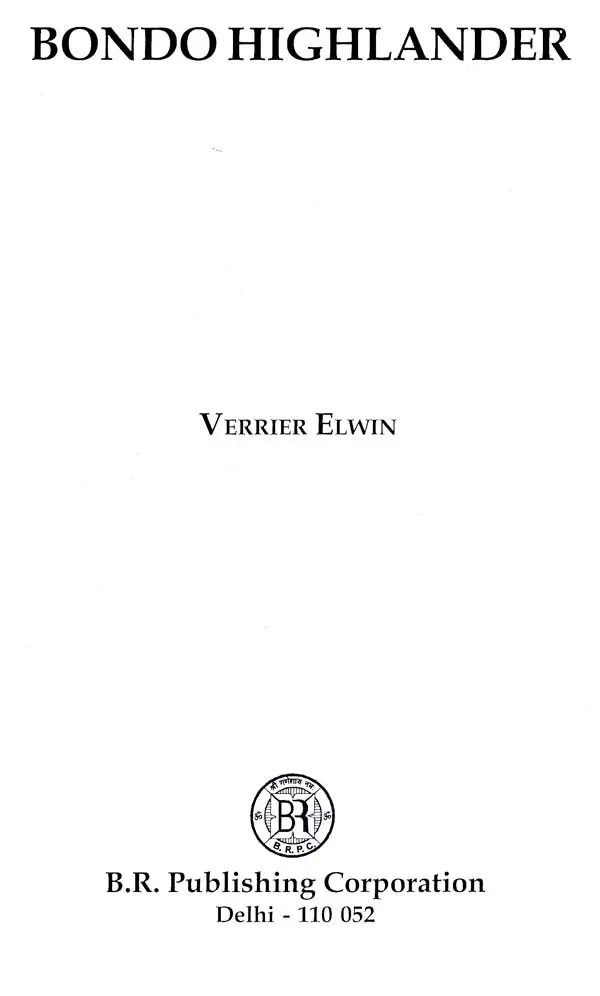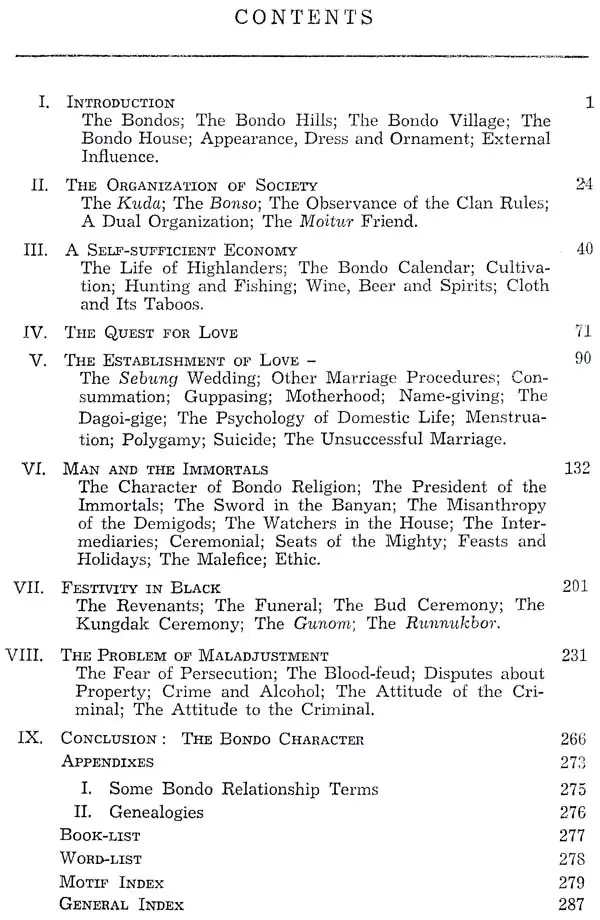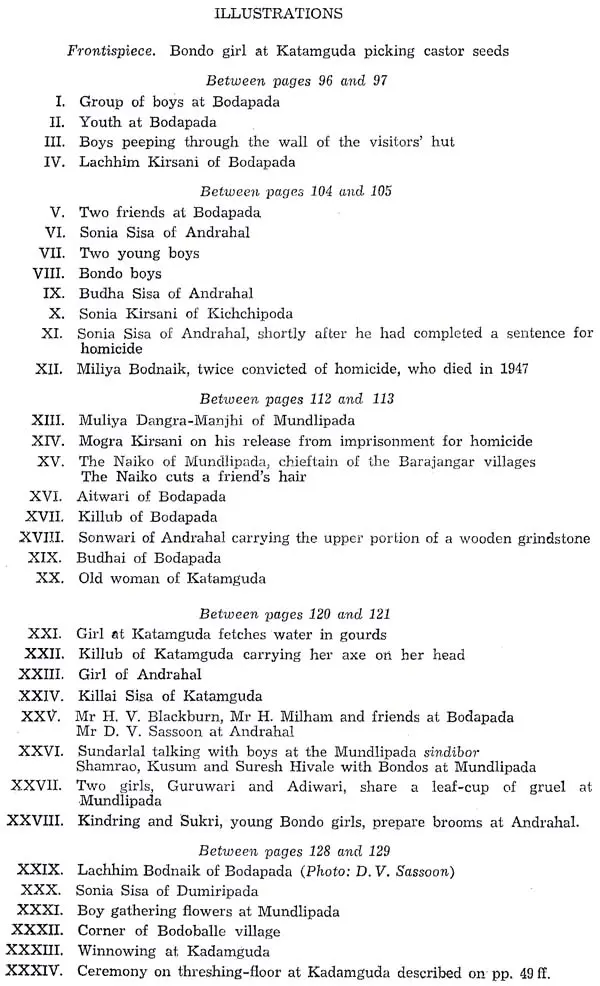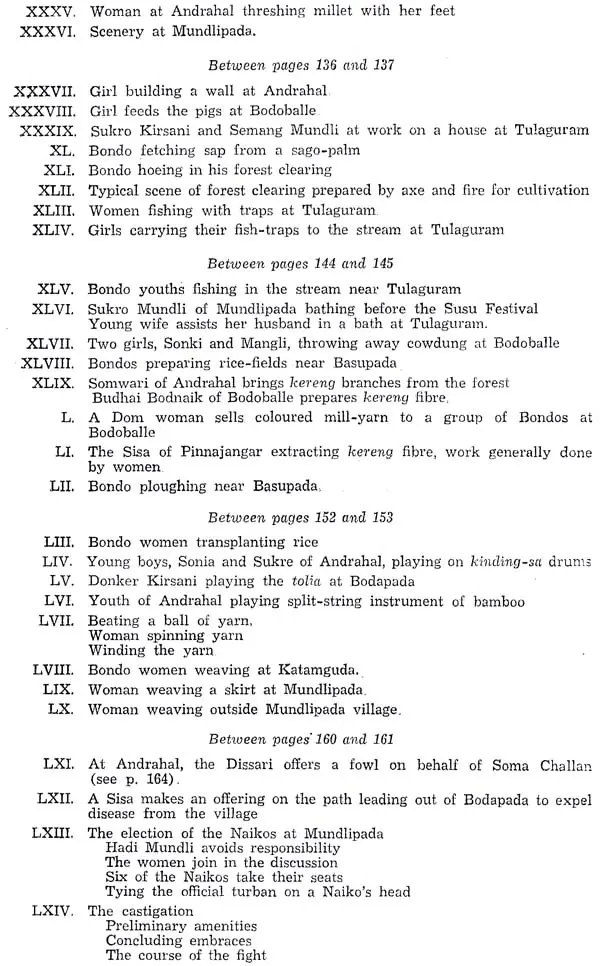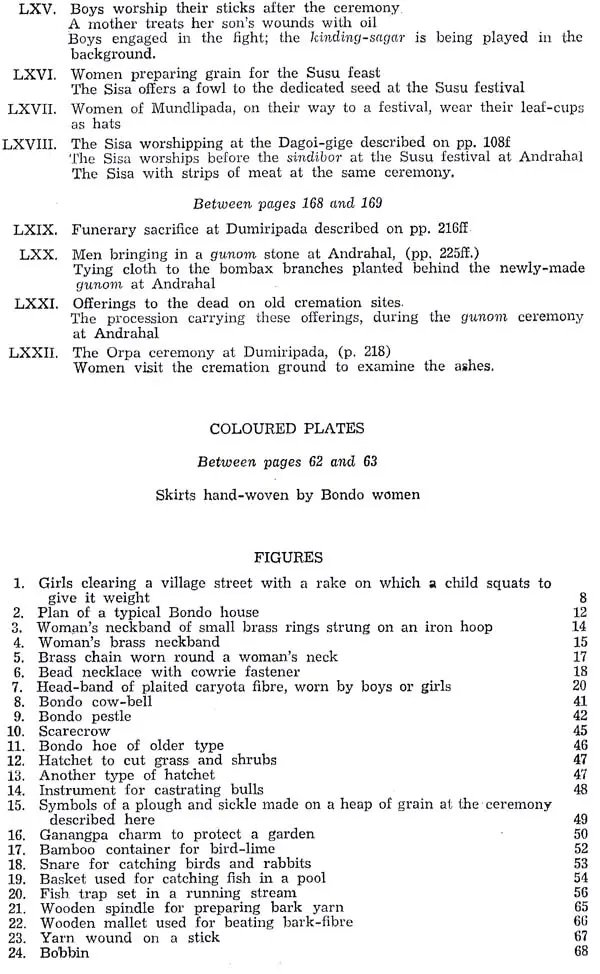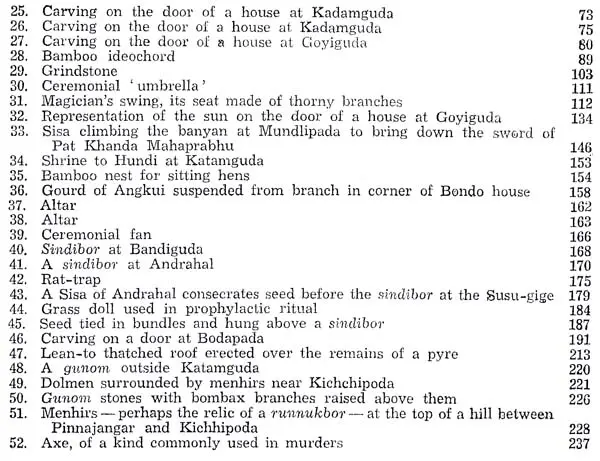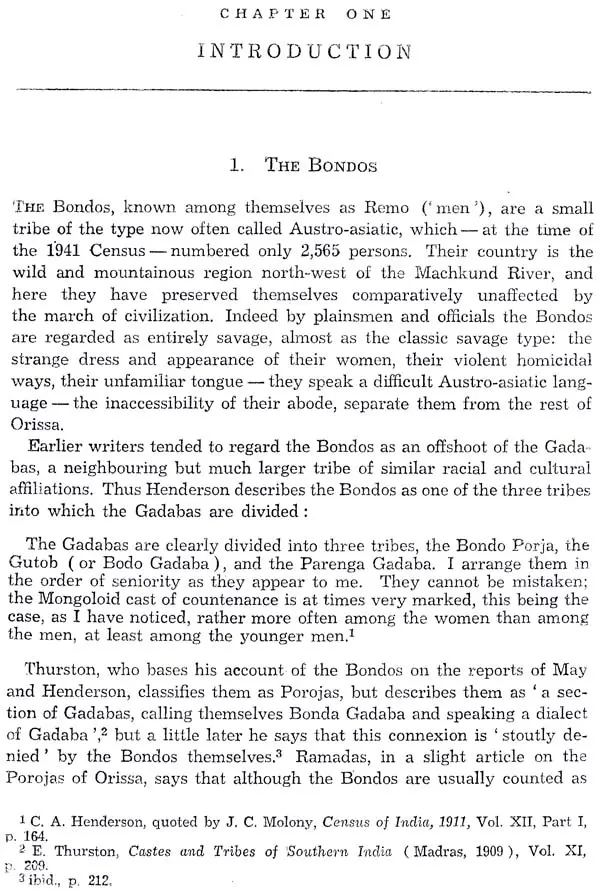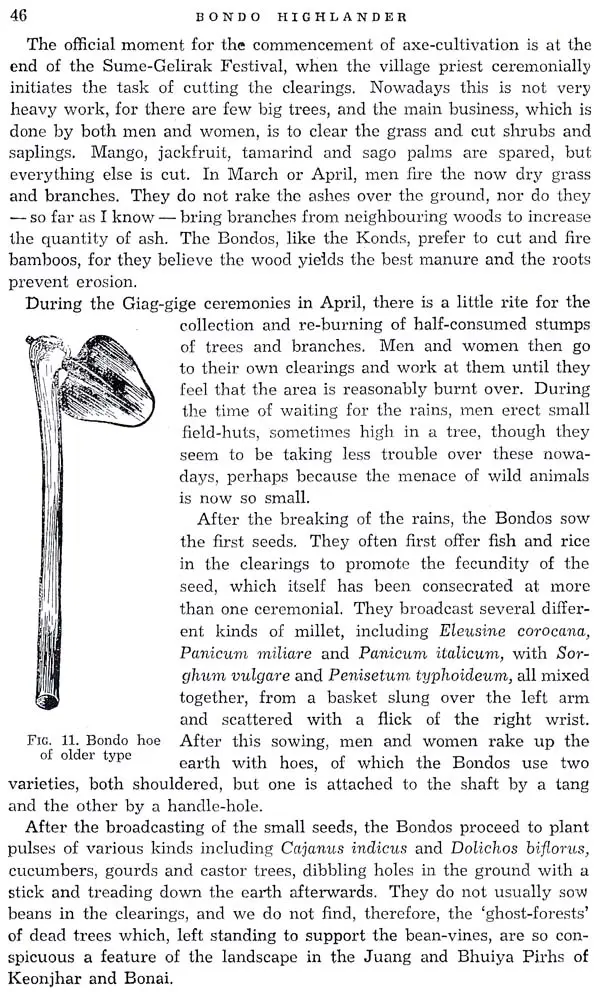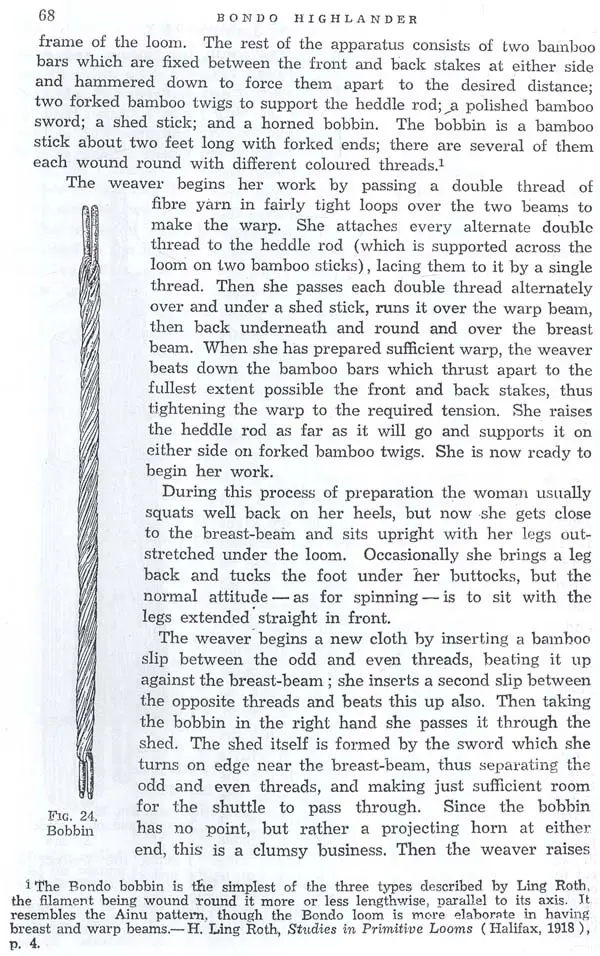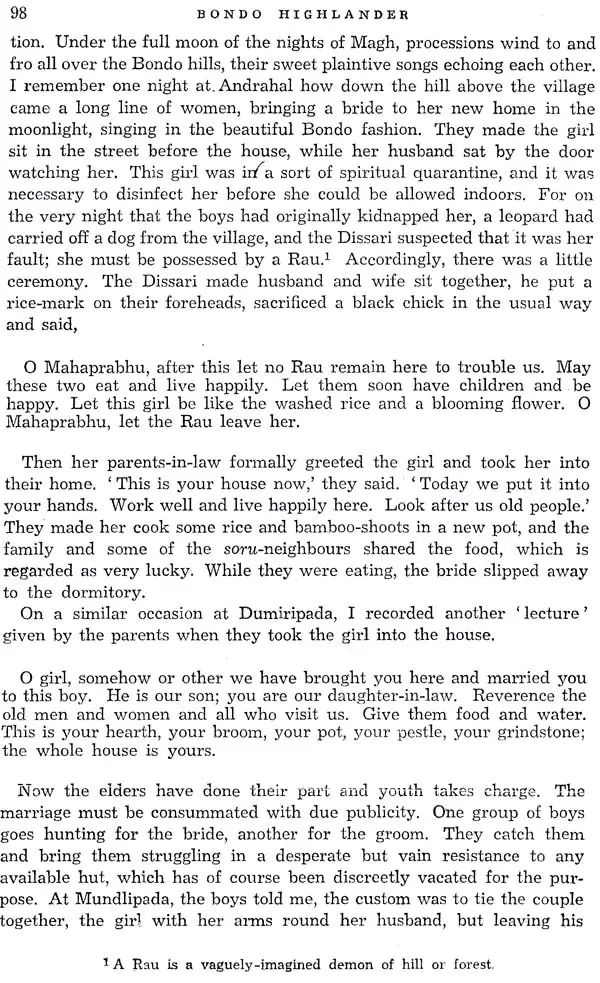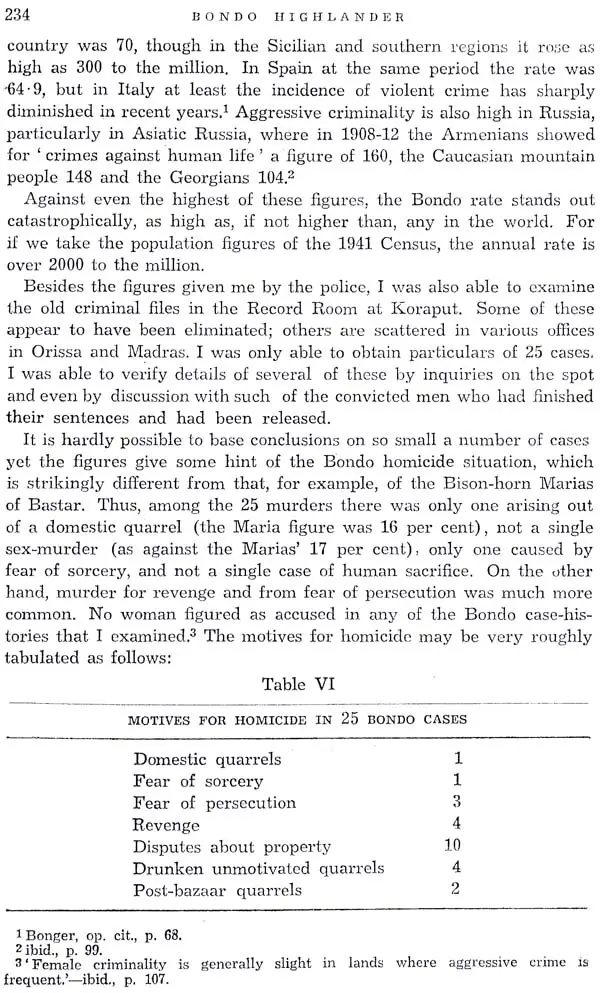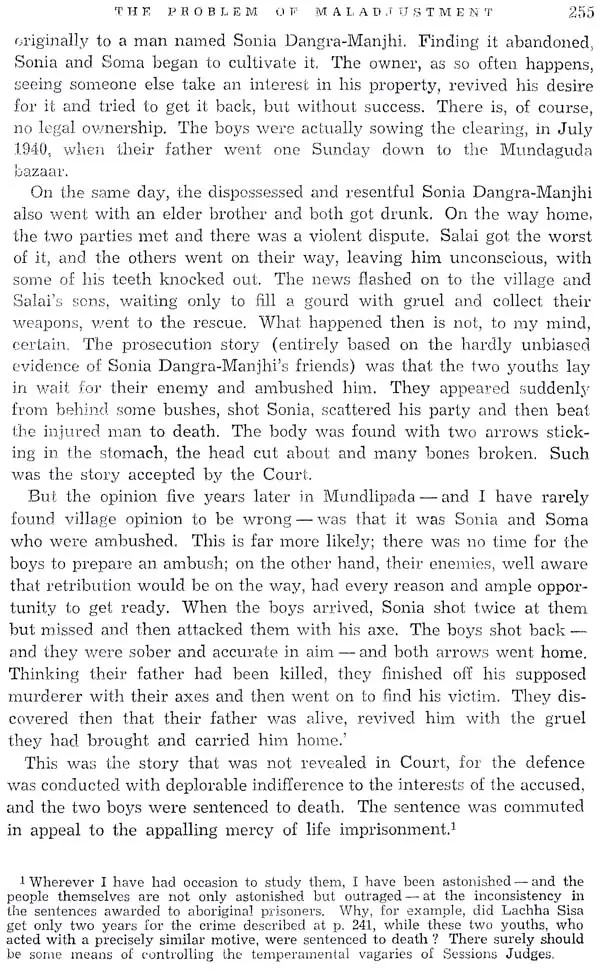
Bondo Highlander
Book Specification
| Item Code: | UAL021 |
| Author: | Verrier Elwin |
| Publisher: | B.R. Publishing Corporation |
| Language: | English |
| Edition: | 2018 |
| ISBN: | 9789387587052 |
| Pages: | 308 |
| Cover: | HARDCOVER |
| Other Details | 9.50 X 6.50 inch |
| Weight | 720 gm |
Book Description
The Bondo, known among themselves as Remo (men) are a small tribe living in the wild and mountainous region north-west of the Machkund River in Orissa. Little has so far been written of this tribe, regarded by plainsmen and officials as entirely savage: the strange dress and appearance of their women, their violent homicidal ways, their unfamiliar tongue and the inaccessibility of their abode has preserved them almost entirely from the march of civilization.
Living high up in the mountains, the Bondo are naturally averse to contact with strangers. Dr. Elwin was able to overcome this aversion and lived among them finally as a friend. This enabled him to make an unusual study of the Bondo character set against the main cultural features of their life. Dr. Elwin was able to study the Bondo's method of cultivation, their weaving, and hunting, their approach to sex and marriage, their religion and attitude to death and the very important problem of their maladjustment to society, which results in an astonishingly high rate of murder.
Verrier Elwin (29 August 1902-22 February 1964) was a British self trained anthropologist, ethnologist and tribal activist, who began his career in India as a Christian missionary. Elwin is best known for his early work with the Baigas and Gonds of Orissa and Madhya Pradesh in Central India and he married a member of one of the communities he studied there. He later also worked on the tribals of several North East Indian states especially North-East Frontier Agency (NEFA) and settled in Shillong, the hill capital of Meghalaya.
In time he became an authority on Indian tribal lifestyle and culture, particularly on the Gondi People. He served as the Deputy Director of the Anthropological Survey of India upon its formation in 1945. Post-independence he took up Indian citizenship. Prime Minister Jawaharlal Nehru appointed him as an adviser on tribal affairs for north-eastern India, and later he was Anthropological Adviser to the Government of NEFA (now Arunachal Pradesh).
THIS book is the first of a series which will aim at throwing some illumi nation on the tribal life of Orissa, one of the most interesting ethnographic provinces of India. Difficulty of communications, a climate notorious for malaria and blackwater, the temperament of the tribesmen which is often hostile to strangers and intolerant of authority, has led to a general neglect of the anthropology of the province. Much has been written and has been reproduced over and over again-about one aspect of the ancient culture of the Konds, their attachment to infanticide and human sacrifice, but this, fundamental as it is for an understanding of Kond psycho logy, is far from being the whole story of this fascinating tribe. The genius of Dalton played but fitfully over the fringes of Orissa; he has some brilliant pages on the Juangs and Bhuiyas, but his explorations did not take him beyond the States into what is now called Orissa but was then Madras. The Ethnographic Survey had little to say about the inhabitants of Ganjam and Koraput; Thurston, in his Castes and Tribes of Southern India, has a few pages on the Gadabas, Konds, Porojas and Saoras (Savaras), but most of his information is based on the reports of other people and, though sound enough, is slight and superficial. Risley has a dozen pages on the Konds, whom he calls Kandhs, a little (mostly lifted from Dalton) on the Juangs and Bhuiyas, and a few pages on the Savaras. Russell and Hiralal have something to say about the Gadabas, chiefly the few and uncharacteristic Gadabas of Bastar, the Konds of Kalahandi and Sambalpur, the Parjas (now called Dhurwas) of Bastar State, and the Savaras. Since then there have been some inferior and inaccurate articles in Man in India, some notes in the reports of the Census of India, and one or two amateur linguistic studies. More recently, however, Orissa has been visited by Dr E. von Eikstedt, who spent some time among the Konds and Saoras, and by Dr C. von Fürer-Haimendorf whose observations drew attention for the first time to the real ethno graphic problems involved.
The Bondos, known among themselves as Remo (men), are a small tribe of the type now often called Austro-asiatic, which-at the time of the 1941 Census-numbered only 2,565 persons. Their country is the wild and mountainous region north-west of the Machkund River, and here they have preserved themselves comparatively unaffected by the march of civilization. Indeed by plainsmen and officials the Bondos are regarded as entirely savage, almost as the classic savage type: the strange dress and appearance of their women, their violent homicidal ways, their unfamiliar tongue- they speak a difficult Austro-asiatic lang unge-the inaccessibility of their abode, separate them from the rest of Orissa.
Earlier writers tended to regard the Bondos as an offshoot of the Gada bas, a neighbouring but much larger tribe of similar racial and cultural affiliations. Thus Henderson describes the Bondos as one of the three tribes into which the Gadabas are divided:
The Gadabas are clearly divided into three tribes, the Bondo Porja, the Gutob (or Bodo Gadaba), and the Parenga Gadaba. I arrange them in the order of seniority as they appear to me. They cannot be mistaken; the Mongoloid cast of countenance is at times very marked, this being the case, as I have noticed, rather more often among the women than among the men, at least among the younger men.
Book's Contents and Sample Pages
